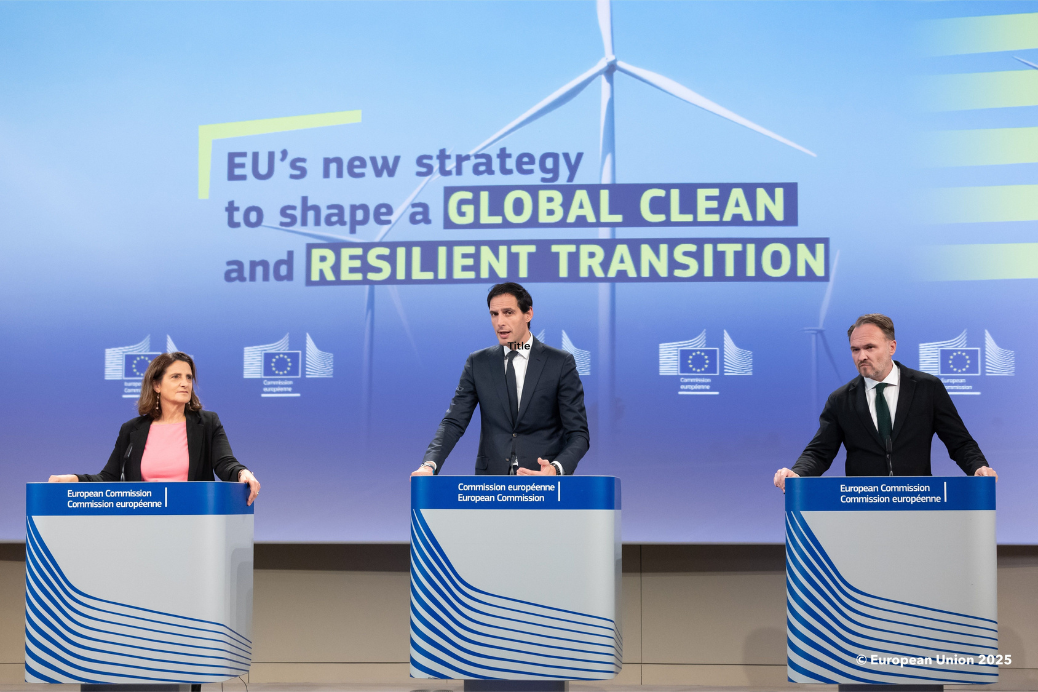
On 16 October, the European Commission presented its new EU global climate and energy vision, an international strategy aimed at positioning Europe at the centre of global climate diplomacy. Yet, despite this new initiative, the Union remains fragmented and divided on concrete climate action—particularly ahead of COP30, the United Nations’ flagship climate conference to be held from 10 to 21 November this year in Belém, Brazil—while discussions on the EU’s 2035 and 2040 greenhouse gas emissions reduction targets have stalled.
The strategy, which rests on a continued commitment to a rules-based international order and to fulfilling the goals of the Paris Agreement, notably presents carbon pricing as a crucial instrument for achieving global climate goals. Among its main proposals, the vision seeks to boost the EU's clean technology manufacturing capacity to reach 15% of the global tech market, in line with the Clean Industrial Deal. The document also recommends promoting EU clean tech businesses internationally and enabling climate-resilient investments through an EU external Clean Transition Business Council, which would contribute to establishing business models for climate adaptation and support EU companies in seizing opportunities arising from the clean transition. Additionally, it announces the creation of a new Global Europe instrument to support partner countries in adopting climate roadmaps and stimulating demand in clean industrial sectors, with a budget of €200 billion for 2028–2034.
The vision also encourages bilateral partnerships and multilateral alliances, notably through instruments such as Free Trade Agreements, Just Energy Transition Partnerships, and Green Alliances, which aim to shift away from fossil fuels and foster regulatory and policy cooperation. Recalling the importance of security and resilience in the context of climate change, the vision seeks to strengthen ties with the United Nations and NATO. The need for the EU to spearhead global climate action was echoed at the recent Council meeting bringing together EU Ministers for the Economy and Finance, who adopted conclusions on climate financing, reaffirming the EU’s commitment to the collective goal of mobilising $100 billion per year in climate finance for developing countries.
Yet, despite these ambitions, the European Union is struggling, both domestically and internationally, to adopt concrete positions on environmental, climate, and energy-related matters. At the forefront stands the EU’s nationally determined contribution (NDC), outlining the Union’s efforts over the next ten years to reduce greenhouse gas emissions and progress towards the Paris Agreement’s goal of limiting global warming to 1.5°C. This was meant to be submitted by September; however, the EU failed to do so on time and only proposed a range of emissions reductions between –66.25% and –72.5%. Meanwhile, on 21 October, the Environment Ministers Council is expected to approve conclusions on the EU’s priorities for COP30, which will form the Union’s negotiating position at the conference.
However, the EU’s 2040 target—an amendment to the EU Climate Law that would see the Union achieve a 90% reduction in greenhouse gas emissions compared to 1990 levels—is notably absent from the agenda, having been removed from the 18 September Environment Council meeting and postponed to that of 4 November. Equally divided, the European Parliament has also delayed its vote, awaiting national guidance. Limited support is expected from EU heads of state and government, set to gather in Brussels on 22 and 23 October for a European Council meeting, despite more than 130 businesses and organisations endorsing the 90% target and calling for predictability and ambitious action. Indeed, according to the meeting’s draft conclusions, Member States’ stance on the 2040 target remains unclear, with the document merely referring to “intensify[ing] collective efforts” to achieve “industrial renewal and decarbonisation (…) in a technologically neutral manner”.The conclusions also suggest a stronger push to support “traditional industries”, including car manufacturing, shipping, aviation, steel, metals, and chemicals.